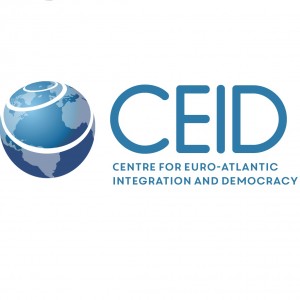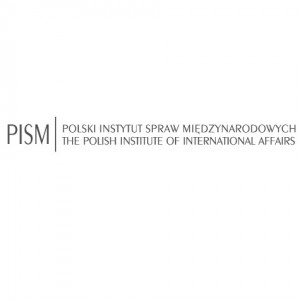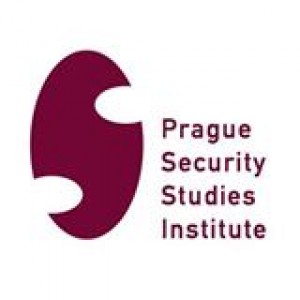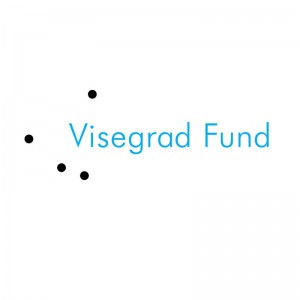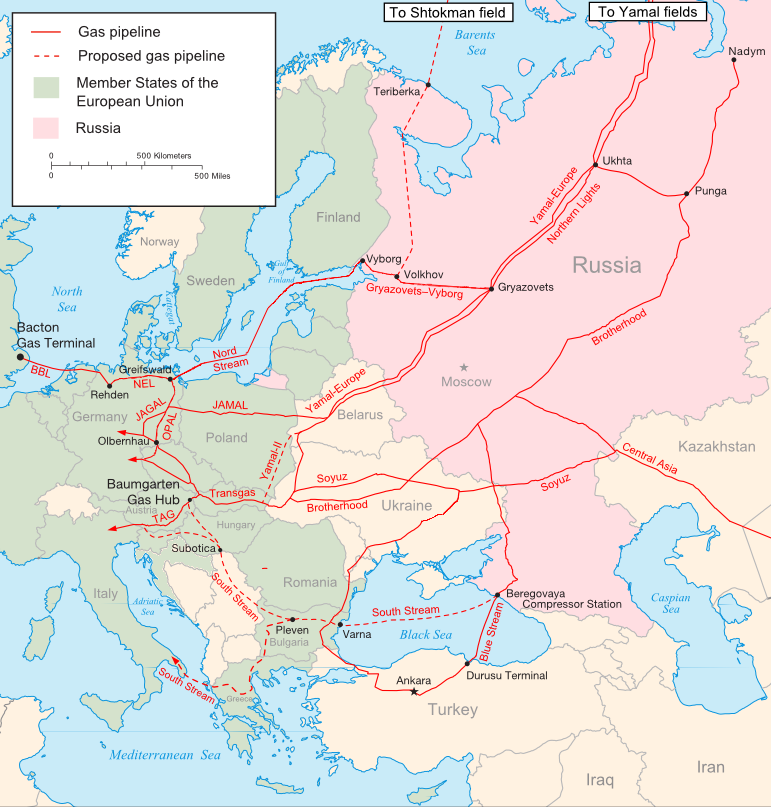
28 Sep V4 and Russian Energy After Wales
by András György Deák, Tomaš Kulda
Regional gas and energy policies has been moving toward a more transparent, competitive and unified market since the late 2000s. This process points to a European market, where Russia has more limited leverage on V4 countries. Nevertheless, this transition is relatively long, it creates new challenges and does not respond to some emerging threats. Thus it would be early to write off Russia as an energy game setter in the Visegrad region, as it has some old and new forms to maintain its influence.
V4 AND RUSSIAN ENERGY – INSTITUTIONAL ASPECTS
After the eruption of hostilities in Eastern Ukraine in 2014, many Central European analysts feared a new wave of Russian-Ukrainian gas debates and severe supply disruptions in the Winter periods. Nonetheless, these pessimistic prognoses did not come true. The gas talks between Kiev and Moscow have become increasingly tense, but the transit issue remained negotiable. Due to the increased attention and primarily to the Western and European financial support, the military conflict has not evolved into another gas crisis yet.
For CEE states Ukrainian gas transit issues remain high on the agenda. The regime of regular “Winter deals” between Ukraine, Russia and the EU does not appear to be a long-term systematic response to the challenge, leaving the future of these supplies open. Nevertheless, the current reactions of these capitals to the newly emerged gas security threats differs remarkably from those after the 2009 gas supply cut. In 2009 these countries put gas security at the first place of their energy policies and created strong collective platform to deal with these challenges. Today the responses are more individual and mixed with other policy considerations. It is reasonable to ask, whether despite external communication, gas security has been still the major challenge in these capitals.
The energy supply situation, in particular the gas supply security of the Visegrad countries has improved in a major extent, as the accessibility to Western European markets have been largely enhanced, since the debate over the gas price between Russia and Ukraine in January 2009. This includes better interconnectivity with Western European hubs and within the region, the emergence of liquid hubs throughout the continent and their impacts on contractual relations. Most of these achievements are lasting and point towards more cohesion and consistency between the Western and Central European markets. Coupled with some less visible trends, as creating a single market on the electricity markets, stalling or diminishing gas consumption in the V4 region (except of Poland), the context of the Russian supply dominance has been changing. Even if Gazprom has a solid position on Visegrad markets, both policy and market dynamics tend to limit its capabilities to fragment national markets and maintain exclusively bilateral relations. National policy actors may choose from a bigger set of options, gas markets have becoming similar to regional oil markets, where an alternative source and transit route are at disposal in the case of every country.
Nonetheless, the bigger set of options does not mean that V4 markets will move away from Russian energy automatically. Despite all these policy and market improvements, regional political elites and Moscow continue to engage in separate and non-transparent energy talks. The case of South Stream, difficulties around facilitating Ukrainian reverse flows or nuclear developments in the Visegrad and SEE countries demonstrate that the Russian leverage in the field of energy is still intact. Independently from the diminished relevance of Russian long-term gas contracts (LTCs), the more articulated European stance in competition issues, Russia still has the potential to shape regional energy relations and supposedly bias European policies in a broader set of issues.
Reasons are manifold. First, Russian energy remains the cheapest source for these countries. Western or maritime imports are increasingly accessible, but not competitive with Russian oil or natural gas. Local hubs, such as Baumgarten, offer lower prices, but their liquidity is low. Imports from Western European hubs, primarily TTF in Netherlands, lose their price advantage due to long transit. LNG imports have been facilitated (Poland, Lithuania) in some cases, but since most of these countries are not ready to pay too much non-Russian premium for these imports, these efforts remain isolated and limited in impact. What is more, there is no credible plan to change this situation. Unlike the situation between 2008 and 2012, when V4 countries had a credible agenda and hoped for cheaper LNG, Azeri imports and new patterns for regional trade, today no major new developments are expected. The European and regional agenda has lost much of its attractivity. The policy makers enjoy the benefits of these achievements, but it is very tempting to look for more in Moscow rather than in Brussels.
Second, the transition from bilateral LTCs to hub-based, high-frequency gas markets is very long. Since 2009 these contractual relations have been renegotiated permanently. Even if Gazprom has to make concessions, this bargaining process opens up opportunities for Moscow to differentiate between national partners. Even if there is a chance that these practices will disappear by time, currently the range for bilateral bargains is much broader than a decade ago. It is not always about price. Often take-over obligations (TOPs), flexibility clauses are at least as important as prices or pricing. It would be too early to write off gas contracts as a potential mean for influencing national policies inside the EU.
Nevertheless the most important change is the relative downgrading of energy security considerations to social affordability aspects in most of the CEE and SEE countries. Oil and gas prices have multiplied during the last decade and remained at an unprecedented high level after 2010. This is not only a current account problem, but also set the energy price issue higher on the domestic agenda. Despite all efforts to keep natural gas and electricity consumer prices at lower levels, according to Eurostat the share of Visegrad utility costs ranged between 7.3% (Hungary) to 11.3% (Slovakia) of final household consumption in 2012[1]. This is almost the double of the Western European proportions. Especially in Hungary and Slovakia, where natural gas is the base fuel for space heating, the utility prices belongs to the top three issues of people’s concern. All these social affordability considerations resulted a more active political involvement in policy issues, in some particular cases the return of the state to these sectors.
This includes not only regulatory aspects. Major international companies, like E.ON, GDF, RWE, Enel have been leaving the region (they had solid positions in all the Visegrad countries except Poland). State companies (Hungary, Slovakia) or smaller, domestic private investors (Slovakia, Czech Republic) took over these positions. Governments are returning into ownership rights, and negotiations with Russia becoming more politicized again. What is more surprising, renationalization trends lead to more corporate fragmentation and more rivalry among these actors. These developments are changing the quality of sectoral policies in the region, often bringing new benchmarks into the decision making pool.
Furthermore, Moscow obviously uses both sets of the opportunities mentioned above. The bilateral, repoliticized energy agendas became broader in the last five years, i.e. nuclear projects became a standard element of energy talks in Hungary and the Czech Republic. Fragmentation also took its toll from regional cooperation: Russian pipeline politics in the case of South Stream also resulted “divide and rule” effects between Slovakia, Czech Republic and Hungary.
BEYOND NABUCCO AND SOUTH STREAM – GRAND ENERGY PROJECTS OF CENTRAL EUROPE
Big project policy and pipeline politics still matter a lot for the three Visegrad countries (except for Poland). Gazprom and Rosatom are active in all these countries. Access to Russian transit projects, like Gazelle in the Czech Republic, Eustream and Eastring in Slovakia or South Stream and Tesla in Hungary, remains a significant goal for the respective national external energy policies. Besides the positive developments in the Ukrainian reverse flows, these relations remain the basic agenda setters for pipeline issues. These issues are relatively big in terms of macroeconomic relations: in Slovakia transit fees from Eustream represent around 1,2% of the GDP[2]. Western stakeholders do not have any particular message about concerns related to the future of Ukrainian transit situation, opening up the way for bilateral negotiations with Russia. Nuclear deals are of even bigger magnitude: the Hungarian extension project accounts for 10% of the GDP and establishes a 30 year long major credit relation with Russia. Similar attempts are present in the Czech Republic as Russia is obviously struggling to find nuclear project partners in the EU and the V4. Nevertheless, due to the extensive project size compared to the small size of the economies and to the low quality of management skills, these projects function as potential bugsets for energy policies.
THE SOCIAL CARD – AN ACE FOR RUSSIA?
Unlike energy security, which is more EU-related, social affordability is still perceived as a bilateral issue with the dominant supplier by most of the policy stakeholders. Populism around energy prices has a major role here. As examples in Bulgaria, Hungary or Slovakia show, offering artificially low utility prices may have a decisive role during electoral campaigns and can decide their outcomes. Some regional governments not only apply administrative pricing regimes, but they use it excessively, accumulating large financial losses in these sectors. EU regulations leave little room for subsidizing, threatening the long-term financial sustainability of these pricing regimes. This is a major window of opportunity for external suppliers, namely Russia. Russian export price concessions form a major tool for populistic energy price policies. Of course these concessions often have to be compensated, whether by ownership rights of policy, presumably even political measures. Paradoxically in the case of energy price populism, the EU is more like an enemy and Russia is a potential ally for many.
Europe will therefore continue to import a substantial part of its energy sources from Russia but expecting to become fully independent on Russian gas is utopist. Europe has more to gain in finding ways how to minimize the negative aspects of its dependency and by ensuring that Russia has as few opportunities to misuse its position as it is possible. One of the main issues stems from the key dilemma of energy security – balancing the roles of public and business sectors in the energy field. In the past years, we witnessed a somehow working cooperation of both, when neither side would make major policy decisions or investment without the consent of the other, creating a stable environment for developing an acceptable level of security. However, the situation has dramatically changed since April 2014 when the European member states agreed on imposing sanctions against the Russian Federation, many of them targeting the energy companies or individuals controlling them.
This seriously affected many Central European energy companies and led to a loss of trust on the business side, followed by a decrease in coordination of their activities. As soon as the business environment is altered by the decisions of public policy makers, companies have a tendency to save their losses by looking for ways to elude the sanctions. As a result, their activities are not in line with public policies anymore, creating dangerous gaps in energy security strategies. Therefore, one of the most important dangers connected to the deteriorating relations with Russia, paradoxically rises from our own milieu. Recreating trustful public-business relations should be one of the priorities in the Central European region.
UKRAINE – THE CORNERSTONE OF REGIONAL ENERGY SECURITY?
Coordinating broader foreign policy with energy policy and especially business activities is absolutely crucial in the V4’s attitude toward Ukraine. Maintaining the Brotherhood pipeline as an important supply route for the V4 presents one of the cornerstones of maintaining the country relatively stable. Not only it represents an essential source of income for the state, but it also guaranties a certain level of importance which is invaluable in negotiations with both Russia and the EU. From a broader security perspective, the V4 countries’ highest interest is to help Ukraine maintain a stable country, as any deterioration of the situation would have major impact on the region. In early October 2015, the Ministers of Visegrad countries responsible for energy issues released a joint declaration supporting further use of the Ukrainian gas transit route after 2019.[3] It will now be crucial to ensure that energy companies engaged in negotiations over building a Southern corridor or further developing other major transit routes will support this political decision.
It will also be necessary to work closely with Ukrainian energy companies as well as the government to ensure secure conditions for operating this transit route. Over the past 25 years the Visegrad countries’ energy sectors went through a deep transformation, from an exclusively state-owned, monopolistic structure with low energy efficiency to a liberalized, unbundled and technically modernized one. The similarities between the Ukrainian and Central European energy sectors offer a potential for sharing good practices and helping Ukrainians to undergo this process at a higher pace. These measures would considerably help Ukraine facing Russian energy companies’ pressure and reinforce its position in the regional energy sector, ensuring more stability in gas deliveries for CEE countries.
Russian energy companies tend to make the best account of the local rules, capitalizing on available blind spots in the regulatory environment. The 2006 and 2009 gas crisis helped Europe to localize its weakest points and adjust accordingly its policies, legal frameworks and infrastructures. A number of these measures can be applied to Ukraine too. Enabling reverse flows between Slovakia and Ukraine was a first step toward a well-needed diversification of supply for the country. The further enhancement of the access to European gas through the Visegrad countries would enhance not only Ukraine’s stance towards it eastern neighbor, but it would subsequently also lead to a much higher liquidity on local gas hubs. In any way, energy issues should be increasingly assessed more from a Visegrad and Ukraine perspective rather than from an only V4 one.
CONCLUSION AND RECOMMENDATIONS
Now, more than ever before, a closer cooperation between the Visegrad countries is necessary in order to set common priorities for the next developments in their energy sectors. In the past decade a number of measures helped to achieve important improvements by creating a better interconnected energy market and challenging Russia’s hegemony over gas supplies. Central European countries are now standing on a crossroad and, because of their unprecedented interdependence, have to carefully harmonize their next steps in terms of pipeline politics, their attitude towards Russia and especially cooperation with Ukraine.
- Energy security should regain higher importance in policy decisions as well as strategic business investments, and better harmonization of both should be sought in order to avoid the apparition of major security gaps.
- The V4 countries should focus on further implementing the third energy package in order to achieve a fully liberalized, highly liquid energy market based on hub-based trading.
- The importance of keeping unity towards Russia should not be underestimated. Even though bilateral deals might be advantageous in the short term, they significantly undermine EU’s efforts to act as a whole, depriving other countries of obtaining comparable advantages.
- Closer support and cooperation with Ukraine is advantageous for both sides, as only as a strong and stable country will be able to face Russian pressure and maintain its position as a key transit country and supplier of Central European countries.
Deák András György is a senior fellow at Centre for Euro-Atlantic Integration and Democracy (CEID) and research fellow at the Institute of World Economics of the Hungarian Academy of Sciences.
Tomaš Kulda is a research fellow at the Prague Security Studies Institute (PSSI).
The analysis is published in the framework of the Visegrad Security Project in partnership with the Central European Policy Institute (CEPI), The Polish Institute of International Affairs (PISM), and the Prague Security Studies Institute (PSSI). The project is based on the cooperation of four influential Visegrad think-tanks in this field, and it aims to create common positions on key questions concerning security policy of the V4.
The project is funded by the International Visegrad Fund.
Disclaimer: The views and opinions expressed in this article are those of the authors and do not necessarily reflect those of the publisher.
© CEID, 2015
[1] Eurostat, Hosuehold Budget Surveys. Internet: http://ec.europa.eu/eurostat/web/household-budget-surveys/database (12.07.2015)
[2] More precisely Eustream revenues constituted 1,16% of Slovakia’s GDP in 2011. Sources: Eustream Annual Report, 2012 and IMF World Economic Outlook Database.
[3] Visegrad Group, Joint Declaration of Visegrad Group Ministers on Gas Transit Through Ukraine. Internet: http://www.visegradgroup.eu/calendar/2015/joint-declaration-of (October 5, 2015)


